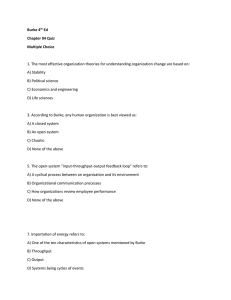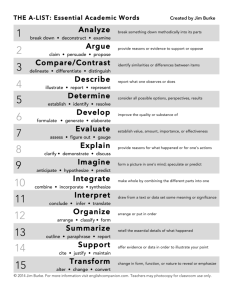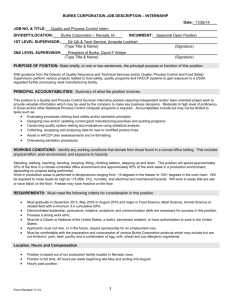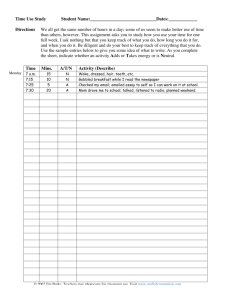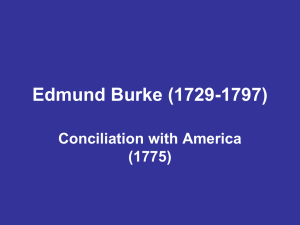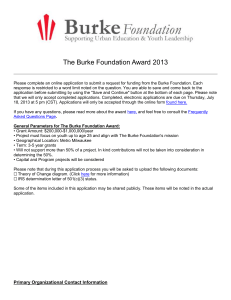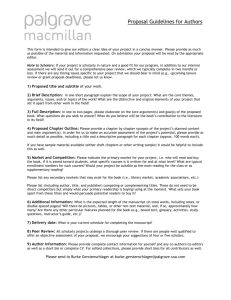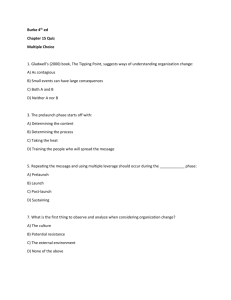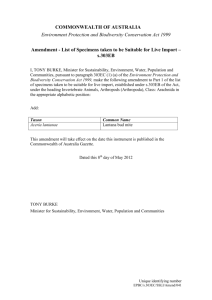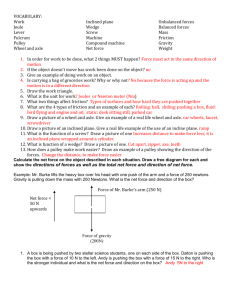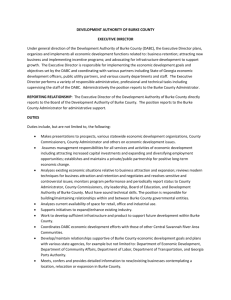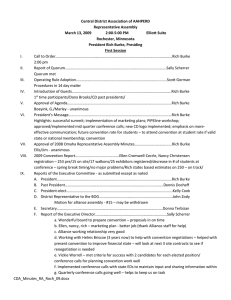Summary of Burke video shown in Week 5 tutorial (note this video is
advertisement
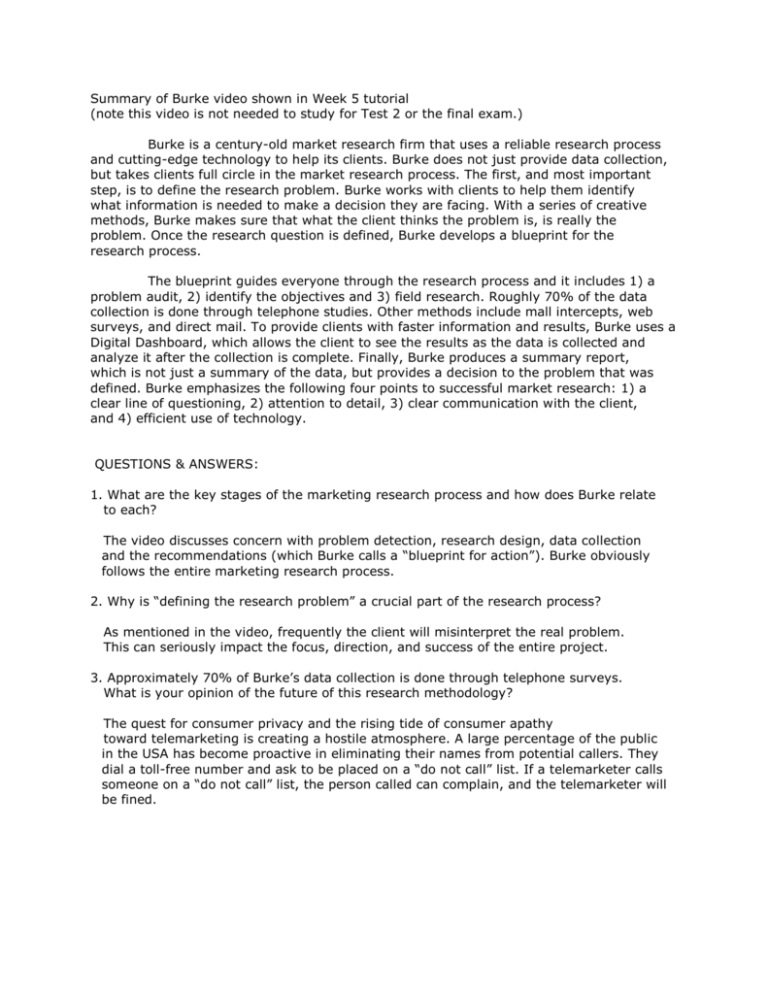
Summary of Burke video shown in Week 5 tutorial (note this video is not needed to study for Test 2 or the final exam.) Burke is a century-old market research firm that uses a reliable research process and cutting-edge technology to help its clients. Burke does not just provide data collection, but takes clients full circle in the market research process. The first, and most important step, is to define the research problem. Burke works with clients to help them identify what information is needed to make a decision they are facing. With a series of creative methods, Burke makes sure that what the client thinks the problem is, is really the problem. Once the research question is defined, Burke develops a blueprint for the research process. The blueprint guides everyone through the research process and it includes 1) a problem audit, 2) identify the objectives and 3) field research. Roughly 70% of the data collection is done through telephone studies. Other methods include mall intercepts, web surveys, and direct mail. To provide clients with faster information and results, Burke uses a Digital Dashboard, which allows the client to see the results as the data is collected and analyze it after the collection is complete. Finally, Burke produces a summary report, which is not just a summary of the data, but provides a decision to the problem that was defined. Burke emphasizes the following four points to successful market research: 1) a clear line of questioning, 2) attention to detail, 3) clear communication with the client, and 4) efficient use of technology. QUESTIONS & ANSWERS: 1. What are the key stages of the marketing research process and how does Burke relate to each? The video discusses concern with problem detection, research design, data collection and the recommendations (which Burke calls a “blueprint for action”). Burke obviously follows the entire marketing research process. 2. Why is “defining the research problem” a crucial part of the research process? As mentioned in the video, frequently the client will misinterpret the real problem. This can seriously impact the focus, direction, and success of the entire project. 3. Approximately 70% of Burke’s data collection is done through telephone surveys. What is your opinion of the future of this research methodology? The quest for consumer privacy and the rising tide of consumer apathy toward telemarketing is creating a hostile atmosphere. A large percentage of the public in the USA has become proactive in eliminating their names from potential callers. They dial a toll-free number and ask to be placed on a “do not call” list. If a telemarketer calls someone on a “do not call” list, the person called can complain, and the telemarketer will be fined.
